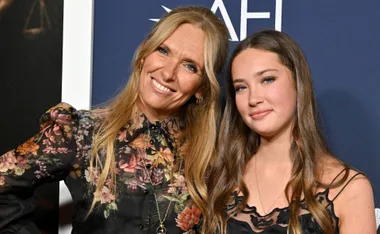What creature laughs so loudly in the morning that it’s also called the Bushman’s Clock? A kookaburra, writes Bindi Irwin.
Pick up a copy of the January issue of The Australian Women’s Weekly to read more about this Aussie favouriet — the kookaburra
Kookaburras are one of my favourite true blue Aussies. Their happy, laughing call makes me smile and think of the fun I have camping, especially sitting by the fire early in the morning. There are two species of kookaburras, the laughing kookaburra and the blue-winged kookaburra. Here at Australia Zoo, we’re very lucky to have both. Kookaburras are part of the kingfisher family and are native to Australia and New Guinea. The laughing kookaburra is the world’s largest kingfisher. The differences between the two kookaburra species are obvious just by looking at them, listening to their call and where they live. The blue-winged kookaburra has a much brighter, almost electric blue colour on its wings and has a high-pitched call that sounds like a dog barking. It’s found only in northern Australia and New Guinea. The laughing kookaburra is found in Queensland, New South Wales and Victoria, and was introduced into Tasmania and southern Western Australia. Here at Australia Zoo, we have two blue-winged kookaburras, Spike and Matilda, and nine laughing kookaburras. Our most famous pair is Tik and Tok. Tik is my favourite. He has a loveable personality and he always wants to sing and show off to visitors. He’s a regular star on my TV show. In the wild, kookaburras will hunt insects, mice, little lizards and even snakes. Like all predators, kookaburras keep the balance by preying on the young, very old, sick and weak animals first. This helps to keep the ecosystem healthy. Tik helps to remind people about not using pesticides to kill insects. When kookaburras eat poisoned insects, they absorb the chemicals and store them in their fat. During times when food is scarce, kookaburras will use some of their fat stores to survive. Large amounts of chemicals can flow into their bloodstream, causing reproductive problems and even death. Please remember, if you must use a pesticide, choose the least toxic one. n This is Bindi Irwin’s final Jungle Girl column for The Australian Women’s Weekly. Her television show, Bindi: The Jungle Girl, screens on ABC TV on Wednesdays at 4.05pm.
Facts about Kookaburras
2 – Kookaburras use a wait-and-pounce technique to catch their food. The kookaburras at the zoo don’t have to find their own food, our keepers never let them go hungry.
3 – Kookaburras may live as long as 20 years if their conditions are good. My favourite, Tik, is more than 12 years old. He has lived at Australia Zoo since 1995.
Bindi’s television show, Bindi: The Jungle Girl, screens on ABC TV on Wednesdays at 4.05pm.
Sadly, Bindi’s questions will finish this month as Bindi needs to focus on her own school work! The Weekly will, however stay in touch with Bindi and the Irwins!









.jpg?resize=380%2C285)

